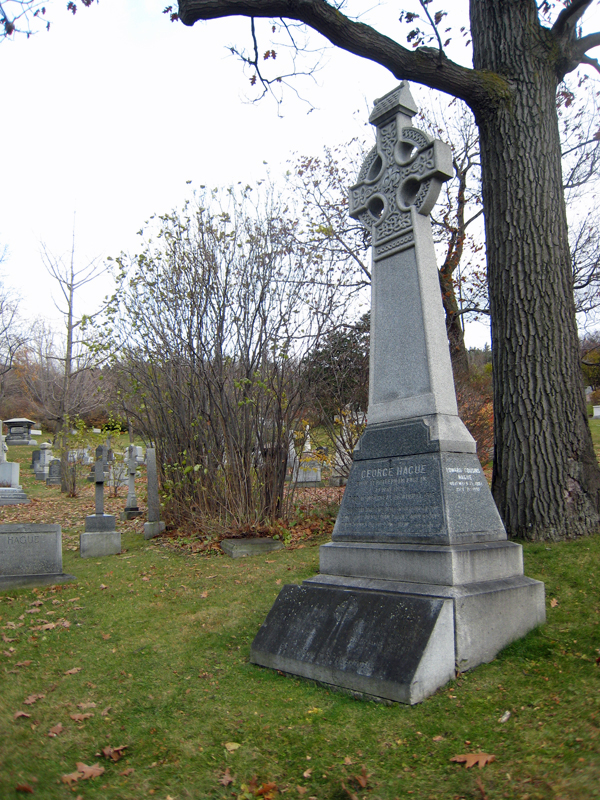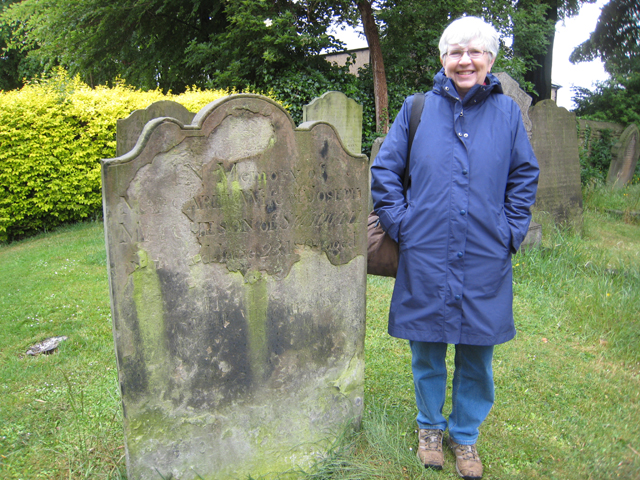
Anyone who has explored the Notman Photographic Archives at the McCord Museum in Montreal has probably met Nora Hague. Nora has been senior cataloguer of the Notman collection for many years, and she is extremely knowledgeable about the English Protestant families of Montreal who were frequent customers of William Notman’s photo studio in the late 19thcentury.
Nora knew that one of my ancestors was Catharine Mitcheson Bagg, a Philadelphia-born member of one of those families. Over the years, she asked me several times about her great-grandfather’s second wife, Mrs. Mitcheson. Finally I figured out who “Mrs.” Mitcheson was: she was Miss Fanny M. Mitcheson, Catharine’s sister.
Nora told me that Mrs. Mitcheson was the companion of Sarah Cousins Hague, wife of banker George Hague. She kept her company at home and accompanied her to social functions. In return, she had a place to live, meals and a small salary. Shortly after Mrs. Hague died in 1900, George announced that he and Fanny were going to be married. Nora says family members were upset, but the wedding plans went ahead.
On March 20, 1902, Mary Frances Mitcheson married George Hague at Holy Trinity Episcopal Church in Philadelphia. The bride was 70, the groom was 77. The bride’s nephew by marriage, Rev. William Lennox Mills, the Anglican Bishop of Ontario, took part in the service.

According to the March 30, 1902 edition of The New York Times, the newlyweds spent their honeymoon at the Lakewood Hotel, Lakewood, New Jersey, where the weather was so warm and sunny that “the visitors have had to put away the heavy overcoats and fur boas they wore when they came here.”
Fanny was born in 1833, the daughter of Philadelphia merchant Robert Mitcheson, originally from Durham, England, and his wife, Scottish-born Mary Frances MacGregor. Fanny was the youngest of five children. Her sister, Catharine, married Montreal notary and land owner Stanley Clark Bagg in 1844.

Perhaps Fanny came to Montreal to be close to her sister, who had been widowed in 1873. They took a trip to Europe together in 1876, along with two of Catharine’s daughters. I don’t know when Fanny started to work for Mrs. Hague.
George Hague died in 1915 and is buried in Montreal’s Mount Royal Cemetery. After his death, Fanny lived with her niece, Amelia J. Norton, one of Catharine Bagg’s daughters.
Fanny died in 1919 and is buried in the Hague family plot. George Hague’s name is carved on a large cross, and Fannie’s grave is marked by a flat stone nearby, now half-hidden by a bush. When I discovered who she was and where she was buried, I went up to the cemetery to say hello.
Photo credits: Miss Mitcheson, Montreal, QC, 1863
William Notman (1826-1891) 1863, 19th century c. McCord Museum
http://www.mccord-museum.qc.ca/en/collection/artifacts/I-5698.1
Cemetery photo by Janice Hamilton
Research Remarks:There were several women named Mary Frances in the Mitcheson family. Mary Frances MacGregor (1792-1862) who married Robert Mitcheson in Philadelphia was the first. The Mary Frances in this story was her daughter (1833-1919). She had two brothers, both of whom had daughters named Mary Frances. Fanny Mary Mitcheson (1851-1937), the daughter of Rev. Robert MacGregor Mitcheson, married Uselma Clarke Smith. Mary Frances Mitcheson (1875-1959), the daughter of lawyer McGregor J. Mitcheson, married Arthur L. Nunns.
The record of the wedding of Mary Frances Mitcheson and George Hague can be found in the Pennsylvania and New Jersey Church and Town Records, 1708-1985, on Ancestry.com. The website of the McCord Museum has a number of photos of George Hague’s family and his house, Rotherwood, on the slopes of Mount Royal. Go to www.musee-mccord.qc.ca and enter your search term in the upper right corner. If you can’t find a photo you think should be there, remember that only some of the many photos taken by William Notman have been digitized at this point.

